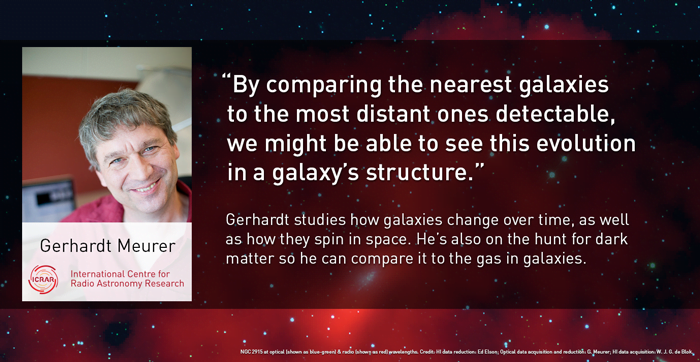Galaxies are constructed of four key components, stars, dust, gas and dark matter. Stars and dust can be studied using optical and infrared telescopes and the gas is visible to radio telescopes, but dark matter within galaxies cannot be directly observed.
“I am trying to understand the relationship between the distribution of gas in galaxy disks and their dark matter distribution,” Professor Meurer said.
“This may allow us to predict how the structure of galaxies changes with time.”
Professor Meurer joined ICRAR in January 2010 to take part in ASKAP science surveys and draw on its new capabilities in his galaxy evolution research. When complete in 2013, ASKAP will study very distant galaxies. Because it takes significant time for their light to reach us, far away galaxies appear younger than those close by, allowing comparisons between galaxies from different periods in the Universe’s history.
“By comparing the nearest galaxies to the most distant ones detectable, we might be able to see this evolution in a galaxy’s structure,” Professor Meurer said.
Before joining ICRAR, Professor Meurer researched galaxy evolution at The Johns Hopkins University in the United States.
“Above all, my favourite part of my job is still doing research,” he said.
